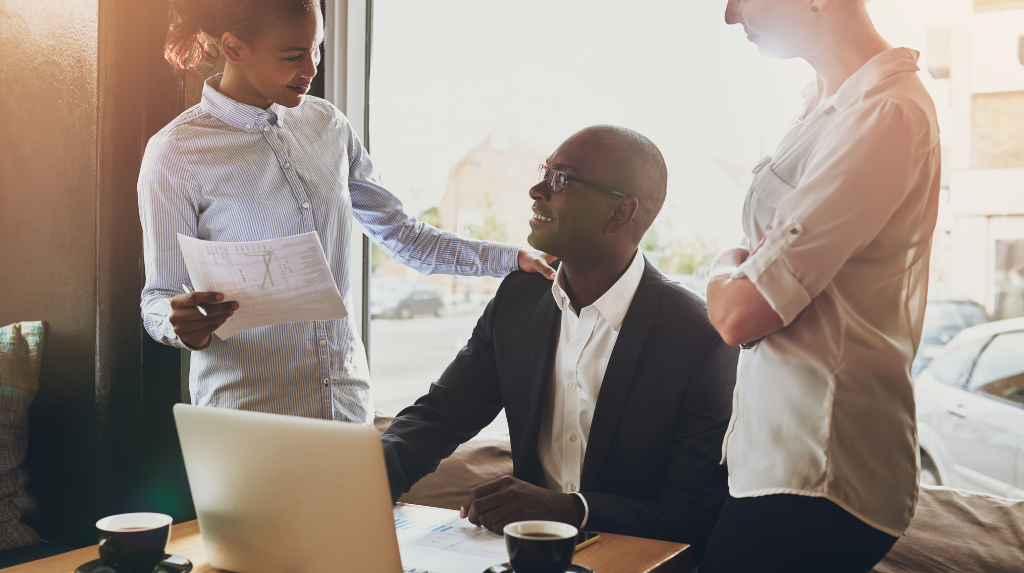If you are a prospective immigrant in the United States seeking a green card or an immigrant visa but encounter inadmissibility, then you may require USCIS Form I-601. This guide provides a detailed step-by-step explanation of completing Form I-601, which underwent revision on April 7th, 2022.
General Guidance to Preparing USCIS Form I-601
It is usually rather overwhelming to fill out the I-601 information because the form is quite lengthy and detailed. But most of the questions do not raise any complex issues, it entirely focuses on your experience in the United States and your family. When completing the I-601 application, you have two options: complete it online, or get a hard copy that has been provided, complete with black ink only.
First Name
Fill any provided space with relevant information during the paper preparation process. For questions labeled “if any,” simply leave the answer blank if it does not apply to the discussed case. For instance, if the form requires you to fill in a “USCIS Online Account number (if any),” and you don’t have one, do not fill it. In the same way, if a question is not suitable for you, write “N/A” or “None” in your answer.
Completing Part 1: The information All About You could be divided into the following parts:
Part 1 requires you to provide information about yourself, answering questions 1 through 14, which include your contact details and citizenship-related identifiers. Those that do not apply are the questions you cannot answer if you haven’t lived in the United States.
- If you have any experience with the USCIS then the Alien Registration number will only be of any use.
- If you do not have a USCIS Account Number, then, this field may remain unfilled.
- If you have not worked in the U.S. before and do not possess a Social Security number, you don’t need to fill out those few pieces of identification.
- This applies to individuals who at one time wanted to immigrate to the U. S but instead applied for an immigrant visa at a Consulate and on arrival were rejected on grounds of inadmissibility.
- If you are applying for a green card under the Department of Homeland Security category through a change of status (within the U. S. ), respond “yes” to Question 16. and your USCIS receipt number if you have one (this is a number provided to you after applying for your immigration benefit and found on an I-797 notice you received).
Completing Part 2: The following is information you must provide to enter the USA:
Part 2 requires information about your presence within the United States and any trip you have made in the past. If you don’t live in the USA at present, then leave the first question unanswered.
When booking a stay, make sure you record your entry date, the immigration status you had at this time, the port of entry, the city, and state in which you lived, the dates of your stay, and the date of departure. To this method of request, you should attach the affidavit of your application claiming that you made the best effort to provide the details.
Completing Part 3: Journalist’s Profile
Part three is used to capture the simplest but indispensable data on the individual. In the “Race” part, many Hispanics fall into the “white” category as this option is the most appropriate for them according to their race.
Completing Part 4: Reasons for Inadmissibility
Section IV provides the vital rationale for filing the application form I-601. If you have had an opportunity to attend a visa or an adjustment of status interview, chances are, you may have had a chance to answer this question. Check the relevant box(es).
At the end of Part 4, there is an empty box in which one states the reasons for inadmissibility by one’s wording. Make sure you complete and list all grounds, as your waiver will only cover those mentioned during the completion of the form.
Completing Part 5: Information About Your Qualifying Relatives
In the classification of a person’s leisure activities, the primary consideration revolves around whether they have a qualifying U.S. citizen relative as a spouse, parent, or child, or if they possess U.S. permanent residence (Immigration and Nationality Act: INA). However, the rules in this section apply to the person when meeting certain grounds of inadmissibility at:
The form begins with a single question to identify a qualifying relative in the first place. If you have the answer for more than one, please tick the box corresponding to the answer and further particulars in Part 10. Pay special attention to the details of the hardship; it is advisable to provide another statement to the attorney if possible.
Completing Part 6
Part 6 asks questions about other relatives in the U.S. even if they don’t qualify as such relatives. Their testimonies can bolster your case, especially if these include the U. S. citizen or permanent resident children.
Keying-in Part 7 – 9
Part 7 of the amendment mandates that your signature on it.
If you employed an interpreter, then this part needs to be filled out as well as signed by the interpreter – Part 8.
If someone else finished the application for you, the person completes and signs the form always Part 9.
Part 10: Additional Information
This section provides additional areas to characterize information that cannot be easily incorporated into the body.
Part 11: Statement for Applicants With a Class A Tuberculosis Condition
Individuals who present themselves as Class A Tuberculosis Condition and who want to apply for a waiver for health-based grounds of inadmissibility must answer this section. The applicant, the attending physician, and a local or state health officer must complete three forms, with the latter confirming the involvement of the applicant’s physician in managing their tuberculosis condition. To review general information about the type of waiver you need, consult the instructions on Form I-601 and the list of documents that may be necessary based on your situation. Individuals who present themselves as Class A Tuberculosis Condition and who want to apply for a waiver for health-based grounds of inadmissibility must answer this section. The applicant, the attending physician, and a local or state health officer must complete three forms, with the latter confirming the involvement of the applicant’s physician in managing their tuberculosis condition.
This page also enquires about the most useful residence address in the United States.
Supporting Documentation With Form I-601
Here are some details to include in your Form I-601 as well as the supporting evidence that ought to back your waiver. Refer to Form I-601 instructions and the list of documents that may be required depending on your situation to review general information about the type of waiver you will need to request.
When and Where to Submit Form I-601
You can submit USCIS Form I-601 with your visa or immigration benefit application, and the way to submit it depends on the application you’re filing. Occasionally, you can submit it before the authorities demand it, especially if you are expecting inadmissibility. Obey the regulations contained in the immigration authorization or consular advice.
In conclusion, USCIS Form I-601 is a critical step in overcoming inadmissibility barriers to obtaining a U.S. green card or immigrant visa. By following these line-by-line instructions, you can navigate the application process effectively and increase your chances of success. For personalized guidance and to ensure your application is thorough, consider consulting with an immigration attorney. Remember, attention to detail is crucial when completing Form I-601, as it directly impacts the outcome of your waiver request.
How can I demonstrate extreme hardship for my qualifying relative in my I-601 application?
To successfully demonstrate extreme hardship for your qualifying relative in your I-601 waiver application, it’s essential to provide comprehensive and compelling evidence. Here’s a structured approach to effectively present your case:
Key Components to Demonstrate Extreme Hardship
- Detailed Personal Statements:
- Both you and your qualifying relative should provide detailed declarations outlining the specific hardships that would result from your inadmissibility.
- Medical Evidence:
- If your qualifying relative has any medical conditions, include documentation such as medical records, treatment plans, and letters from healthcare providers.
- Financial Impact:
- Provide evidence of financial dependency on you. This can include Employment records showing income, Bank statements, Evidence of shared financial responsibilities (e.g., bills, loans), and Statements detailing how the loss of your income would affect the household.
- Educational Considerations:
- If applicable, discuss how separation or relocation would impact the education of children or dependents. Include school records and letters from educators that highlight the importance of stability in their education.
- Employment Opportunities:
- Analyze the job market in your home country compared to the U.S. Provide evidence that demonstrates the lack of comparable employment opportunities for your qualifying relative if they were to relocate.
- Cultural and Social Factors:
- Address potential cultural adjustments and social integration challenges that your qualifying relative may face if they were required to relocate.
- Family Dynamics:
- Discuss the emotional impact of separation on family relationships. Provide testimonies from family members or friends that illustrate the strength of these relationships and how they would be affected by your absence.
- Aggregate Hardship:
- If there are multiple qualifying relatives (e.g., spouse and child), demonstrate how their combined hardships reach the level of extreme hardship, even if individually they do not meet that threshold.
- Affidavits from Friends and Family:
- Obtain affidavits from individuals who can attest to the relationship dynamics and potential hardships faced by your qualifying relative if you are denied admission.
- Documentation of Good Moral Character:
- Include evidence of your good moral character through community service records, letters of recommendation, or other relevant documentation that supports your overall case.
How Law and Visas Can Help?
At Law and Visas, our team of expert immigration consultants is here to make your travel to the United States straightforward and successful. Whether you’re applying for a B-1/B-2 Visitor Visa or F-1 Student Visa, we handle every step from preparing your application to gathering the required documents.
Our immigration Consultants and Lawyers ensure that your application meets the highest standards, with no details missed. We’ll also keep you informed throughout the process, coordinating with the immigration office or embassy on your behalf.
Law and Visas has a strong record of helping clients secure the visas/permits they need to do the United States. Call us today at +234 812 5505 986 to learn how we can assist you.





